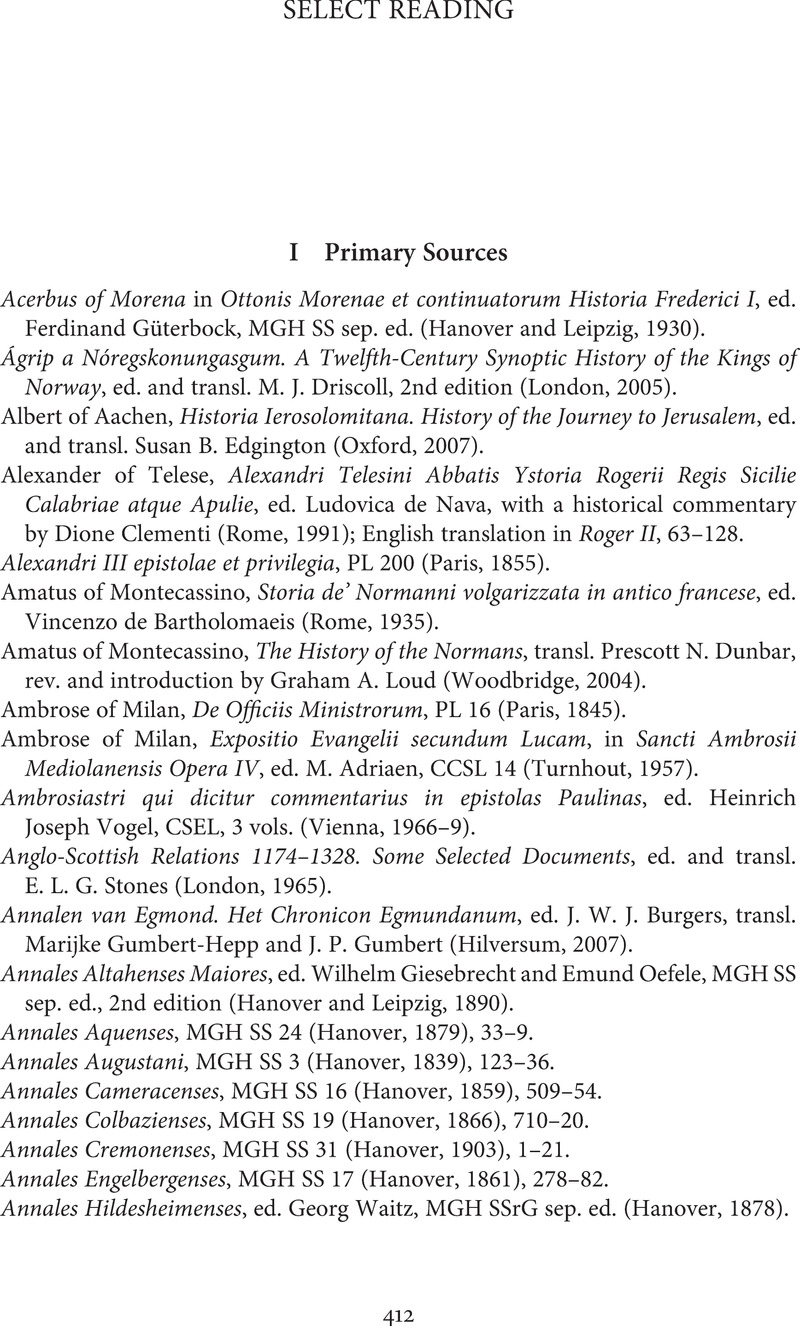Book contents
- Paths to Kingship in Medieval Latin Europe, c. 950–1200
- Paths to Kingship in Medieval Latin Europe, c. 950–1200
- Copyright page
- Contents
- Maps
- Acknowledgements
- Abbreviations
- Timeline
- Introduction
- Part I Foundations
- Part II Creating Kingship
- Part III Succession
- Part IV Election
- Part V Inauguration
- Select Reading
- Index
- References
Select Reading
Published online by Cambridge University Press: 24 September 2021
- Paths to Kingship in Medieval Latin Europe, c. 950–1200
- Paths to Kingship in Medieval Latin Europe, c. 950–1200
- Copyright page
- Contents
- Maps
- Acknowledgements
- Abbreviations
- Timeline
- Introduction
- Part I Foundations
- Part II Creating Kingship
- Part III Succession
- Part IV Election
- Part V Inauguration
- Select Reading
- Index
- References
Summary

- Type
- Chapter
- Information
- Paths to Kingship in Medieval Latin Europe, c. 950–1200 , pp. 412 - 463Publisher: Cambridge University PressPrint publication year: 2021



